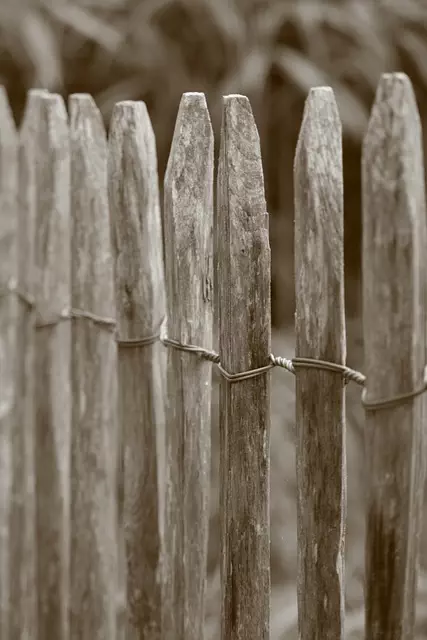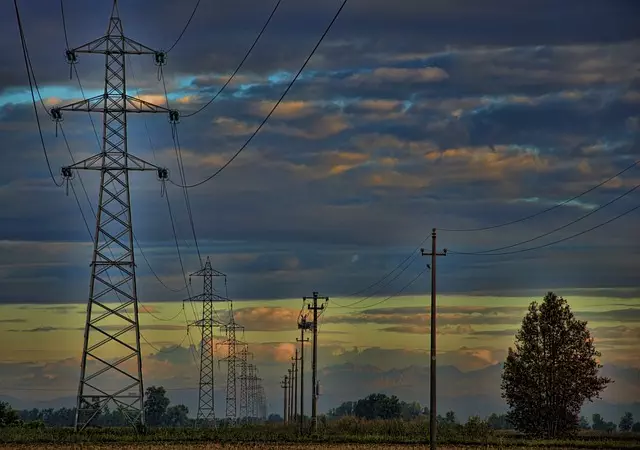Kratom (Mitragyna speciosa) cultivation requires precise conditions to replicate its native Southeast Asian environment for optimal growth and high alkaloid content, particularly mitragynine and 7-hydroxymitragynine, which are associated with anti-inflammatory benefits. Successful cultivation involves controlling temperature, humidity, soil pH, light exposure, and post-harvest drying and storage to preserve these compounds. Harvesting leaves at the correct stage before full maturity is crucial for maintaining potency. Additionally, integrating kratom into an inflammation management plan should be done in consultation with healthcare providers due to individual health considerations and potential interactions with other substances. This approach combines kratom cultivation with a holistic lifestyle that includes dietary choices, physical activity, and stress management to effectively manage inflammation and support overall well-being. Understanding 'how to grow a kratom plant' is essential for those seeking to utilize its potential therapeutic properties responsibly.
Exploring the therapeutic potential of kratom for inflammation reduction, this article delves into the botanical properties of this unique plant and offers insights on cultivating your own kratom for freshness and potency. We’ll guide you through the optimal conditions for growing kratom, including climate, soil, and sunlight requirements, ensuring you harvest at the peak of alkaloid concentration. Additionally, we provide detailed steps for post-harvest processing to maintain and enhance its efficacy. Finally, learn how to integrate kratom into a holistic inflammation management plan, enhancing your well-being with a homegrown, natural approach.
- Understanding Kratom's Role in Inflammation Reduction: A Botanical Approach
- The Essential Steps to Cultivating Your Own Kratom Plant for Optimal Freshness
- Ideal Conditions for Kratom Growth: Climate, Soil, and Sunlight Considerations
- Harvesting Kratom: Timing Your Pick for Peak Alkaloid Concentration
- Post-Harvest Processing: Drying and Storing Kratom to Maintain Potency
- Integrating Kratom into a Holistic Inflammation Management Plan
Understanding Kratom's Role in Inflammation Reduction: A Botanical Approach

Kratom, a tropical evergreen tree native to Southeast Asia, has garnered attention in both traditional and modern herbal medicine for its potential anti-inflammatory properties. The leaves of the kratom plant, Mitragyna speciosa, contain a wealth of alkaloids, with mitragynine and 7-hydroxymitragynine being the most prominent. These compounds are believed to interact with various receptors within the body, influencing pain perception and inflammatory responses. The anti-inflammatory effects of kratom may be attributed to its ability to modulate cytokines, which are key signaling molecules in the immune response, and to downregulate certain pro-inflammatory pathways.
For those intrigued by the medicinal qualities of kratom and considering how to grow a kratom plant, it’s important to understand that kratom thrives in conditions that mimic its natural environment. Kratom plants require warm, humid conditions with well-draining soil and consistent moisture. Cultivating kratom indoors or outdoors necessitates careful attention to these environmental factors, as variations can significantly affect the plant’s alkaloid profile and potency. As such, interested growers should research optimal growing practices, including the right conditions for vegetative growth and flowering, to ensure a high-quality yield conducive to its medicinal properties. Understanding the intricacies of kratom cultivation is crucial for those looking to explore this botanical approach to inflammation reduction.
The Essential Steps to Cultivating Your Own Kratom Plant for Optimal Freshness

Growing your own kratom plant can be a rewarding endeavor, offering the freshness and purity that many seek for optimal inflammation reduction benefits. To initiate this process, it’s crucial to start with high-quality seeds or cutting from a healthy kratom tree, as the plant’s vigor is a reflection of its offspring. Kratom plants thrive in environments that mimic their native habitat in Southeast Asia; therefore, they require well-draining soil rich in organic matter, consistent moisture, and indirect sunlight to flourish. Regularly monitor the soil’s moisture level, ensuring it remains evenly moist but not waterlogged, as overwatering can lead to root rot, a common issue that can compromise plant health.
Furthermore, kratom plants prefer temperatures between 70-85 degrees Fahrenheit and are sensitive to cold drafts and drastic temperature changes. Position your plant in a location where it receives ample sunlight without direct exposure, such as near a north-facing window or under grow lights for about 6-8 hours daily. Fertilize with a balanced, organic fertilizer every few weeks, adjusting the frequency based on the season and growth phase of the plant. Pruning is also an essential step to encourage bushier growth and more abundant leaves, which are rich in the alkaloids responsible for kratom’s anti-inflammatory properties. Regularly harvesting mature leaves, as needed for consumption, can also stimulate new growth, ensuring a consistent supply of fresh kratom for your wellness regimen. With careful attention and optimal growing conditions, cultivating your own kratom plant can lead to a steady source of potentially beneficial leaves for inflammation reduction and other wellness goals.
Ideal Conditions for Kratom Growth: Climate, Soil, and Sunlight Considerations

Kratom (Mitragyna speciosa), a tropical evergreen tree native to Southeast Asia, thrives under specific conditions that replicate its natural environment. To grow kratom successfully, one must carefully consider climate, soil, and sunlight factors. The ideal climate for kratom cultivation is characterized by warm, humid conditions with consistent temperatures ranging between 77°F and 82°F (25°C to 28°C). This tropical tree requires a significant amount of rainfall, typically around 80 to 100 inches per year, distributed evenly throughout the year to maintain soil moisture without waterlogging.
In terms of soil, kratom plants prefer well-draining, fertile soils rich in organic matter. The pH level should ideally be between 5.0 and 7.0 to optimize nutrient uptake. Ensuring the soil has a good structure will help with aeration and water retention. Additionally, the sunlight conditions are crucial; kratom plants need ample sunlight for photosynthesis but must be shielded from intense, direct midday sun that can scorch the leaves. Partial shade, especially during the hottest part of the day, is conducive to healthy growth. By adhering to these environmental requirements, growers can create the right conditions to foster a robust kratom plant, which is essential for achieving optimal alkaloid content and maximizing the plant’s medicinal properties, particularly in reducing inflammation. Understanding and implementing how to grow a kratom plant under these specific conditions will lead to a successful cultivation process.
Harvesting Kratom: Timing Your Pick for Peak Alkaloid Concentration

Kratom (Mitragyna speciosa), a tropical evergreen tree native to Southeast Asia, has gained attention for its potential medicinal properties, particularly in inflammation reduction. The alkaloids found within kratom leaves, such as mitragynine and 7-hydroxymitragynine, are believed to contribute to this effect. To harness the full therapeutic potential of kratom, understanding the optimal harvesting time is crucial. The concentration of these key alkaloids can vary significantly based on when the leaves are picked. Typically, kratom leaves contain higher levels of alkaloids at certain stages of maturity. For growers aiming to cultivate kratom plants for their medicinal properties, it’s important to monitor the leaves’ development closely. The leaves should be harvested just before they reach full maturity to ensure peak alkaloid concentration. This is a delicate balance, as over-matured leaves can decrease the potency of these active components. Therefore, careful timing and attention to the plant’s life cycle are essential for successful kratom cultivation. Growers must consider environmental factors such as soil quality, humidity, and light exposure, all of which can influence the alkaloid content and the optimal time for harvesting. By adhering to these best practices and understanding the nuances of kratom plant growth, enthusiasts and researchers can effectively cultivate kratom with higher alkaloid yields, ensuring a product that is both potent and consistent in quality.
Post-Harvest Processing: Drying and Storing Kratom to Maintain Potency

Kratom (Mitragyna speciosa), a tropical evergreen tree native to Southeast Asia, has garnered attention for its potential medicinal properties, particularly in inflammation reduction. The efficacy of kratom is highly dependent on the quality of its post-harvest processing, which includes drying and storing. Proper post-harvest care significantly influences the alkaloid content and, consequently, the potency of the dried kratom leaves.
The drying process is critical; it must be executed with precision to prevent degradation of the active compounds. Leaves are typically laid out in a well-ventilated, shaded area to dry. This should be done quickly but not rushed, as rapid drying can lead to loss of volatile alkaloids. The ideal conditions allow the leaves to retain their medicinal properties while preventing mold growth and reducing moisture content to a level where the alkaloids are preserved. After drying, kratom leaves must be stored in a cool, dark, and dry place, away from direct sunlight and high humidity. Controlled storage helps maintain the integrity of the alkaloids, ensuring their availability when consumed.
For those interested in cultivating kratom plants, understanding these post-harvest processing steps is essential for yielding a product that retains its therapeutic benefits. The journey from a seed to a potent dried leaf is one that requires careful attention at every stage. Growers must balance the need for optimal drying and storage conditions with environmental factors to achieve the best possible outcome, which directly impacts the anti-inflammatory effects that kratom can offer.
Integrating Kratom into a Holistic Inflammation Management Plan

Integrating Kratom into a holistic inflammation management plan can be a multifaceted approach that combines natural remedies with lifestyle changes and medical interventions when necessary. Kratom, a plant native to Southeast Asia, has been traditionally used for its medicinal properties, one of which is its potential to alleviate inflammation. For those interested in cultivating their own Kratom plants, understanding ‘how to grow a Kratom plant’ is crucial. These plants thrive in environments with consistent humidity and temperature, well-draining soil, and adequate sunlight. Growing Kratom can be a rewarding experience, allowing for fresh, organic leaves that may contribute to a sustainable and personalized inflammation management plan.
When incorporating Kratom into an overall health strategy, it’s important to consider the plant’s various strains, as they may have different effects on the body. For instance, red vein Kratom is often associated with pain-relieving and anti-inflammatory benefits, while white vein Kratom might offer energizing and mood-enhancing properties that indirectly support inflammation management by improving overall well-being. It’s essential to consult with healthcare professionals when integrating Kratom into your regimen, especially considering any existing health conditions or medications you may be taking. Additionally, a holistic approach also emphasizes diet, exercise, and stress management as integral components in effectively managing inflammation. This comprehensive strategy not only leverages the potential anti-inflammatory properties of Kratom but also promotes a balanced lifestyle conducive to long-term health.
Kratom’s potential in reducing inflammation has been explored, revealing its promising role as a natural compound within holistic health practices. This article has delved into the intricacies of cultivating kratom plants, emphasizing the importance of optimal growing conditions and precise harvesting to maximize their anti-inflammatory benefits. By following the detailed guidelines on post-harvest processing, enthusiasts can maintain the plant’s potency effectively. Integrating kratom into a broader inflammation management strategy offers a botanical approach that aligns with many individuals’ search for alternative remedies. For those interested in how to grow a kratom plant, the insights provided here serve as a comprehensive guide to harnessing this plant’s benefits safely and responsibly.






